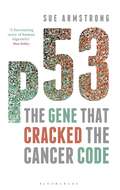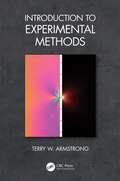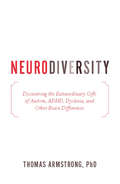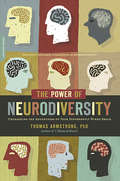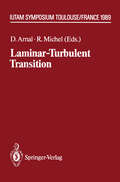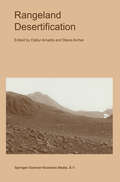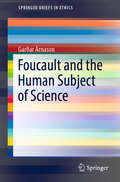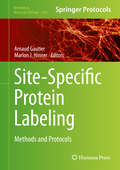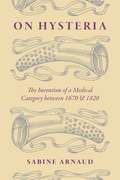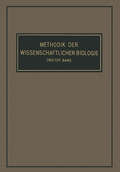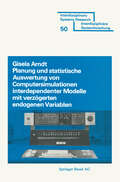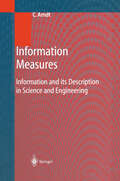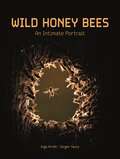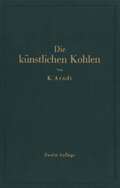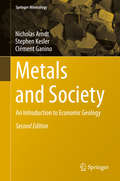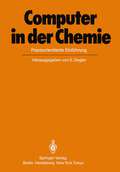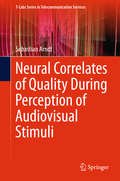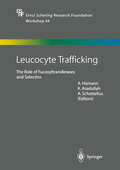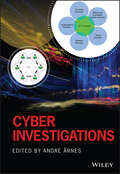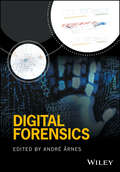- Table View
- List View
p53: The Gene that Cracked the Cancer Code
by Sue ArmstrongAll of us have lurking in our DNA a most remarkable gene, which has a crucial job – it protects us from cancer. Known simply as p53, this gene constantly scans our cells to ensure that they grow and divide without mishap, as part of the routine maintenance of our bodies. If a cell makes a mistake in copying its DNA during the process of division, p53 stops it in its tracks, summoning a repair team before allowing the cell to carry on dividing. If the mistake is irreparable and the rogue cell threatens to grow out of control, p53 commands the cell to commit suicide. Cancer cannot develop unless p53 itself is damaged or prevented from functioning normally.Perhaps unsurprisingly, p53 is the most studied single gene in history.This book tells the story of medical science's mission to unravel the mysteries of this crucial gene, and to get to the heart of what happens in our cells when they turn cancerous. Through the personal accounts of key researchers, p53: The Gene that Cracked the Cancer Code reveals the fascination of the quest for scientific understanding, as well as the huge excitement of the chase for new cures – the hype, the enthusiasm, the lost opportunities, the blind alleys, and the thrilling breakthroughs. And as the long-anticipated revolution in cancer treatment tailored to each individual patient's symptoms begins to take off at last, p53 remains at the cutting edge.This timely tale of scientific discovery highlights the tremendous recent advances made in our understanding of cancer, a disease that affects more than one in three of us at some point in our lives.
Introduction to Experimental Methods
by Terry W. ArmstrongIntroduction to Experimental Methods succinctly explains fundamental engineering concepts in mechanics, dynamics, heat transfer, and fluid dynamics. From conceptualizing an engineering experiment to conducting a comprehensive lab, this book enables students to work through the entire experimental design process.Offering a complete overview of instruction for engineering lab methodology, the book includes practical lab manuals for student use, directly complementing the instruction. Numerous worked examples and problems are presented along with several hands-on experiments in individual lab manuals. This book discusses how to write lab reports, how to configure a variety of instruments and equipment, and how to work through failures in experimentation.Introduction to Experimental Methods is intended for senior undergraduate engineering students taking courses in Experimental Methods. Instructors will be able to utilize a Solutions Manual for their course.Features: Provides an overview of experimental methods in mechanics, dynamics, heat transfer, and fluid dynamics Covers design of experiments, instruments, and statistics Discusses SolidWorks and PASCO Capstone software Includes numerous end-of-chapter problems and worked problems Features a Solutions Manual for instructor use
Introduction to Experimental Methods
by Terry W. ArmstrongIntroduction to Experimental Methods succinctly explains fundamental engineering concepts in mechanics, dynamics, heat transfer, and fluid dynamics. From conceptualizing an engineering experiment to conducting a comprehensive lab, this book enables students to work through the entire experimental design process.Offering a complete overview of instruction for engineering lab methodology, the book includes practical lab manuals for student use, directly complementing the instruction. Numerous worked examples and problems are presented along with several hands-on experiments in individual lab manuals. This book discusses how to write lab reports, how to configure a variety of instruments and equipment, and how to work through failures in experimentation.Introduction to Experimental Methods is intended for senior undergraduate engineering students taking courses in Experimental Methods. Instructors will be able to utilize a Solutions Manual for their course.Features: Provides an overview of experimental methods in mechanics, dynamics, heat transfer, and fluid dynamics Covers design of experiments, instruments, and statistics Discusses SolidWorks and PASCO Capstone software Includes numerous end-of-chapter problems and worked problems Features a Solutions Manual for instructor use
Neurodiversity: Discovering the Extraordinary Gifts of Autism, ADHD, Dyslexia, and Other Brain Differences
by Thomas ArmstrongA new term has emerged from the disability movement in the past decade to help change the way we think about neurological disorders: Neurodiversity.ADHD. Dyslexia. Autism. The number of categories of illnesses listed by the American Psychiatric Association has tripled in the past fifty years. With so many people affected by our growing "culture of disabilities,” it no longer makes sense to hold on to the deficit-ridden idea of neuropsychological illness.With the sensibility of Oliver Sacks and Kay Redfield Jamison, psychologist Thomas Armstrong offers a revolutionary perspective that reframes many neuropsychological disorders as part of the natural diversity of the human brain rather than as definitive illnesses. Neurodiversity emphasizes their positive dimensions, showing how people with ADHD, bipolar disorder, and other conditions have inherent evolutionary advantages that, matched with the appropriate environment or ecological niche, can help them achieve dignity and wholeness in their lives.
Neurodiversity: Discovering the Extraordinary Gifts of Autism, ADHD, Dyslexia, and Other Brain Differences
by Thomas ArmstrongA new term has emerged from the disability movement in the past decade to help change the way we think about neurological disorders: Neurodiversity. ADHD. Dyslexia. Autism. The number of categories of illnesses listed by the American Psychiatric Association has tripled in the past fifty years. With so many people affected by our growing -- culture of disabilities, -- it no longer makes sense to hold on to the deficit-ridden idea of neuropsychological illness. With the sensibility of Oliver Sacks and Kay Redfield Jamison, psychologist Thomas Armstrong offers a revolutionary perspective that reframes many neuropsychological disorders as part of the natural diversity of the human brain rather than as definitive illnesses. Neurodiversity emphasizes their positive dimensions, showing how people with ADHD, bipolar disorder, and other conditions have inherent evolutionary advantages that, matched with the appropriate environment or ecological niche, can help them achieve dignity and wholeness in their lives.
The Power of Neurodiversity: Unleashing the Advantages of Your Differently Wired Brain (published in hardcover as Neurodiversity)
by Thomas ArmstrongADHD. dyslexia. autism. the number of illness categories listed by the American Psychiatric Association has tripled in the last fifty years. With so many people affected, it is time to revisit our perceptions on this “culture of disabilities.” Bestselling author, psychologist, and educator Thomas Armstrong illuminates a new understanding of neuropsychological disorders. He argues that if they are a part of the natural diversity of the human brain, they cannot simply be defined as illnesses. Armstrong explores the evolutionary advantages, special skills, and other positive dimensions of these conditions. A manifesto as well as a keenly intelligent look at “disability,” The Power of Neurodiversity is a must for parents, teachers, and anyone who is “differently brained.”
The Power of Neurodiversity: Unleashing the Advantages of Your Differently Wired Brain (published in hardcover as Neurodiversity)
by Thomas ArmstrongADHD. dyslexia. autism. the number of illness categories listed by the American Psychiatric Association has tripled in the last fifty years. With so many people affected, it is time to revisit our perceptions on this "culture of disabilities." Bestselling author, psychologist, and educator Thomas Armstrong illuminates a new understanding of neuropsychological disorders. He argues that if they are a part of the natural diversity of the human brain, they cannot simply be defined as illnesses. Armstrong explores the evolutionary advantages, special skills, and other positive dimensions of these conditions. A manifesto as well as a keenly intelligent look at "disability," The Power of Neurodiversity is a must for parents, teachers, and anyone who is "differently brained."
Laminar-Turbulent Transition: IUTAM Symposium Toulouse/France September 11–15, 1989 (IUTAM Symposia)
by D. Arnal R. MichelThe subject of laminar-turbulent transition is of considerable practical importance and has a wide range of engineering applications. For this reason, the International Union of Applied Mechanics decided to sponsor a third Symposium on "Laminar-Turbulent Transition", which would be organised by the ONERA Toulouse Research Center and held at "Ecole Nationale Superieure de l'Aeronautique et de l'Espace" in 1989. It was supposed that like the two previous IUTAM Symposia (Stuttgart 1979 and Novosibirsk 1984) the symposium would be devoted to experimental of laminar-turbulent transition In fluids, i.e. the and theoretical studies physical problem of transition and mathematical modelling in shear flows. The contributed papers were selected by the Scientific Committee from extended abstracts. The larger number of highly qualified papers submitted for presentation led us to include in the program poster sessions, which could be held during morning, lunch and afternoon breaks, and to take the decision that the symposium should last five days (from Monday 11 to Friday 15 September). An excursion on Wednesday offering a well deserved rest and the occasion of new personal exchanges between the participants seems to have been appreciated by all. The symposium consisted of 8 invited lectures and 62 contributed pa pers presented either on oral or poster sessions.
Rangeland Desertification (Advances in Vegetation Science #19)
by Olafur ArnaldsDesertification has occurred worldwide. The biophysical and socio-economic complexity of this phenomenon has challenged our ability to categorize, inventory, monitor and repair the condition of degraded lands. One of the most important distinctions to be made in relation to land degradation is between cultivated land used for annual crop production and `rangelands'. Grazing by free-roaming livestock is the traditional primary use of the world's rangelands. However, there is growing recognition of the importance of these vast acreages for wildlife habitat, hydrology and ground water recharge, recreation and aesthetics. This text focuses on the desertification of rangelands and explores processes, problems and solutions. Chapters in the first section evaluate interactions between `natural' and human-induced disturbance regimes, thresholds, and non-linear change with respect to vegetation, hydrology, nutrients and erosion. Chapters in the second section examine socio-economic constraints and approaches for preventing and reversing degradation. The book provides a contemporary, process-oriented perspective on rangeland degradation of value to students, policy-makers and professionals alike.
Foucault and the Human Subject of Science
by Garðar ÁrnasonThis book offers a clear analysis of Foucault’s work on scientific knowledge and its relationship to individuals and society. It suggests a way of using Foucault’s tools for science criticism and resistance, while avoiding the pitfalls of vulgar relativism or irrational anti-science views. Two cases of scientific conflict are considered. The first considers left-handers as subjects of science, in particular studies which purport to show that left-handers die on average younger than right-handers. The second case considers Icelanders as subjects of science in the context of a partly failed attempt to construct a genetic database encompassing the entire nation.The book will be of interest to bioethicists and philosophers who are concerned with the interaction between science and its human subjects, as well as scholars concerned with Foucault’s work on science.
Site-Specific Protein Labeling: Methods and Protocols (Methods in Molecular Biology #1266)
by Arnaud Gautier and Marlon J. HinnerThis detailed volume provides in-depth protocols for protein labeling techniques and applications, with an additional focus on general background information on the design and generation of the organic molecules used for the labeling step. Chapters provide protocols for labeling techniques and applications, with an additional focus on general background information on the design and generation of the organic molecules used for the labeling step. Written in the highly successful Methods in Molecular Biology series format, chapters include introductions to their respective topics, lists of the necessary materials and reagents, step-by-step, readily reproducible laboratory protocols, and tips on troubleshooting and avoiding known pitfalls.Authoritative and practical, Site-Specific Protein Labeling: Methods and Protocols provides a comprehensive overview on the most relevant and established labeling methodologies, and helps researchers to choose the most appropriate labeling method for their biological question.
On Hysteria: The Invention of a Medical Category between 1670 and 1820
by Sabine ArnaudThese days, hysteria is known as a discredited diagnosis that was used to group and pathologize a wide range of conditions and behaviors in women. But for a long time, it was seen as a legitimate category of medical problem—and one that, originally, was applied to men as often as to women. In On Hysteria, Sabine Arnaud traces the creation and rise of hysteria, from its invention in the eighteenth century through nineteenth-century therapeutic practice. Hysteria took shape, she shows, as a predominantly aristocratic malady, only beginning to cross class boundaries (and be limited to women) during the French Revolution. Unlike most studies of the role and status of medicine and its categories in this period, On Hysteria focuses not on institutions but on narrative strategies and writing—the ways that texts in a wide range of genres helped to build knowledge through misinterpretation and recontextualized citation. Powerfully interdisciplinary, and offering access to rare historical material for the first time in English, On Hysteria will speak to scholars in a wide range of fields, including the history of science, French studies, and comparative literature.
On Hysteria: The Invention of a Medical Category between 1670 and 1820
by Sabine ArnaudThese days, hysteria is known as a discredited diagnosis that was used to group and pathologize a wide range of conditions and behaviors in women. But for a long time, it was seen as a legitimate category of medical problem—and one that, originally, was applied to men as often as to women. In On Hysteria, Sabine Arnaud traces the creation and rise of hysteria, from its invention in the eighteenth century through nineteenth-century therapeutic practice. Hysteria took shape, she shows, as a predominantly aristocratic malady, only beginning to cross class boundaries (and be limited to women) during the French Revolution. Unlike most studies of the role and status of medicine and its categories in this period, On Hysteria focuses not on institutions but on narrative strategies and writing—the ways that texts in a wide range of genres helped to build knowledge through misinterpretation and recontextualized citation. Powerfully interdisciplinary, and offering access to rare historical material for the first time in English, On Hysteria will speak to scholars in a wide range of fields, including the history of science, French studies, and comparative literature.
Allgemeine Physiologie
by Otto ArnbeckDieser Buchtitel ist Teil des Digitalisierungsprojekts Springer Book Archives mit Publikationen, die seit den Anfängen des Verlags von 1842 erschienen sind. Der Verlag stellt mit diesem Archiv Quellen für die historische wie auch die disziplingeschichtliche Forschung zur Verfügung, die jeweils im historischen Kontext betrachtet werden müssen. Dieser Titel erschien in der Zeit vor 1945 und wird daher in seiner zeittypischen politisch-ideologischen Ausrichtung vom Verlag nicht beworben.
Planung und Stastistische Auswertung von Computersimulationen interdependenter Modelle mit verzögerten endogenen Variablen: Spektralradius- und Parameterschätzung nach der zweistufigen Methode der Kleinsten Quadrate und der Maximum-Likelihood-Methode bei beschränkter Information (Interdisciplinary Systems Research #50)
by ARNDTInformation Measures: Information and its Description in Science and Engineering (Signals and Communication Technology)
by Christoph ArndtFrom the reviews: "Bioinformaticians are facing the challenge of how to handle immense amounts of raw data, […] and render them accessible to scientists working on a wide variety of problems. [This book] can be such a tool." IEEE Engineering in Medicine and Biology
Wild Honey Bees: An Intimate Portrait
by Ingo Arndt Jürgen TautzA lavishly illustrated exploration of the mysterious, hidden world of forest-dwelling wild honey bees—with new insights that promise to revolutionize conservation and beekeepingThe honey bee, a key pollinator, is now an endangered species, threatened by human activity and loss of biodiversity. Because of this, understanding forest-dwelling wild honey bees—which are more resistant to diseases and parasites than honey bees kept by beekeepers—is more important than ever before. In this lavishly illustrated book, Ingo Arndt, one of the world’s best wildlife photographers, and Jürgen Tautz, one of the world’s leading bee experts, set out on the trail of wild honey bees, bringing back sensational photographs, some of which document behaviors never captured before, and new scientific insights that promise to revolutionize conservation and beekeeping.A remarkable number of wild honey bee colonies still exist, living in hollow trees inside the forest, largely unnoticed by humans. This book explores the fascinating secret world of wild honey bees, including the adaptations and behaviors they have acquired to survive and the new challenges they face today. Featuring incredible macro and wide-angle photographs, some taken from inside hives, Wild Honey Bees is a unique collaboration that documents a major research project and offers critical new insights about these essential creatures.A stunning photographic record that documents for the first time the original way of life of the endangered, forest-dwelling honey beeA unique collaboration between one of the world’s best wildlife photographers and one of its leading bee expertsFeatures incredible macro and wide-angle photographs, some from inside the hive, depicting bees as never seen beforeOffers fascinating new insights into the mysterious, hidden world of the wild honey bee
Wild Honey Bees: An Intimate Portrait
by Ingo Arndt Jürgen TautzA lavishly illustrated exploration of the mysterious, hidden world of forest-dwelling wild honey bees—with new insights that promise to revolutionize conservation and beekeepingThe honey bee, a key pollinator, is now an endangered species, threatened by human activity and loss of biodiversity. Because of this, understanding forest-dwelling wild honey bees—which are more resistant to diseases and parasites than honey bees kept by beekeepers—is more important than ever before. In this lavishly illustrated book, Ingo Arndt, one of the world’s best wildlife photographers, and Jürgen Tautz, one of the world’s leading bee experts, set out on the trail of wild honey bees, bringing back sensational photographs, some of which document behaviors never captured before, and new scientific insights that promise to revolutionize conservation and beekeeping.A remarkable number of wild honey bee colonies still exist, living in hollow trees inside the forest, largely unnoticed by humans. This book explores the fascinating secret world of wild honey bees, including the adaptations and behaviors they have acquired to survive and the new challenges they face today. Featuring incredible macro and wide-angle photographs, some taken from inside hives, Wild Honey Bees is a unique collaboration that documents a major research project and offers critical new insights about these essential creatures.A stunning photographic record that documents for the first time the original way of life of the endangered, forest-dwelling honey beeA unique collaboration between one of the world’s best wildlife photographers and one of its leading bee expertsFeatures incredible macro and wide-angle photographs, some from inside the hive, depicting bees as never seen beforeOffers fascinating new insights into the mysterious, hidden world of the wild honey bee
Die künstlichen Kohlen für elektrische Öfen, Elektrolyse und Elektrotechnik
by Kurt Arndt J. ZellnerDieser Buchtitel ist Teil des Digitalisierungsprojekts Springer Book Archives mit Publikationen, die seit den Anfängen des Verlags von 1842 erschienen sind. Der Verlag stellt mit diesem Archiv Quellen für die historische wie auch die disziplingeschichtliche Forschung zur Verfügung, die jeweils im historischen Kontext betrachtet werden müssen. Dieser Titel erschien in der Zeit vor 1945 und wird daher in seiner zeittypischen politisch-ideologischen Ausrichtung vom Verlag nicht beworben.
Metals and Society: An Introduction to Economic Geology (Springer Mineralogy #2)
by Nicholas Arndt Stephen Kesler Clément GaninoThis book is a comprehensive overview of economic geology for the general geologist and anyone else interested in the minerals industry and the global supply of raw materials. It includes some thought-provoking statements and questions for discussion on globalisation and current practices in the minerals industry. In the second edition, all chapters have been extensively revised, and a new author has been added to increase coverage of some mineral deposits and topics. The economic issues surrounding the exploitation of mineral resources is discussed in three of the six chapters of the book. It deals with issues that are commonly addressed in current science reporting – the rate of exploitation of natural resources, the question of when or if these resources will be exhausted, the pollution and social disturbance that accompanies mining, the compromises and challenges that arise from the explosion in demand from China, India and other rapidly developing countries, and the moral issues that surround mining of metals in lesser-developed countries for consumption in the “first-world” countries. The book will be useful both as an introductory text for students in the earth sciences and a reference volume for students, teachers and researchers of geography, economics and the social sciences.
Computer in der Chemie: Praxisorientierte Einführung
by R. W. Arndt P. Bischof J. T. Clerc J. Gasteiger C. Krüger G. Szekely K. Varmuza E. Zass E. Ziegler1907-66: 3'791'519 1967-71: 1'314'655 (8. Sammelregister) 6'418'796 1972-76: 1'772'194 (9. Sammelregister) { online 1977 -81: 2'201'680 (10. Sammelregister) 1982- : 1'130'267 (bis Bd. 100; 30. 6. 84) Seit 1965 hat CAS 6'699'392 verschiedene chemische Verbindungen registriert (Stand: 30. 6. 84); dazu kommen noch ca. 1,5 Mill. Verbindungen, die vor 1965 in der Literatur erschienen sind und z. Z. maschinell erfaßt werden [6]. Wie kann man nun diese Informationsmengen noch mit vertretbarem Auf wand bewältigen? Als etwa Mitte des letzten Jahrhunderts die Zahl der Zeit schriften so groß wurde, daß sie vom einzelnen Wissenschaftler nicht mehr überschaubar war, entstanden die ersten Referatezeitschriften [1 a, 7]. Heute reicht dieses Instrument der Information in seiner gedruckten, manuell zu be nutzenden Form nicht mehr aus. Die Verarbeitung und Speicherung von gro ßen Datenmengen mit Computern liegt auf der Hand [8]. Die heute wichtigste Einsatzform des Computers zur gezielten (Wieder)gewinnung von Information (,Retrieval') durch den (End)benutzer ist die ,Online-Recherche'.
Neural Correlates of Quality During Perception of Audiovisual Stimuli (T-Labs Series in Telecommunication Services)
by Sebastian ArndtThis book presents a new approach to examining the perceived quality of audiovisual sequences. It uses electroencephalography (EEG) to explain in detail how user quality judgments are formed within a test participant, and what the physiological implications might be when subjects are exposed to lower quality media. The book redefines the experimental paradigms of using EEG in the area of quality assessment so that they better suit the requirements of standard subjective quality testing, and presents experimental protocols and stimuli that have been adjusted accordingly.
Leucocyte Trafficking: The Role of Fucosyltransferases and Selectins (Ernst Schering Foundation Symposium Proceedings #44)
by ArndtSchottelius KhusruAsadullah AlfHamannAn essential component of inflammation is the migration of circulating leukocytes from blood into tissues. This process is characterized by a multistep paradigm of sequential cell adhesion and activation events that lead to the extravasation of specific leukocyte subsets to different tissues in health and disease. The first step of leukocyte extravasation, the rolling of leukocytes, is primarily mediated by the interactions of selectins and their ligands. It has recently become evident that fucosyltransferases are crucial for selectin ligand synthesis, inflammation, and skin homing. This book provides an in-depth overview of the mechanisms of leukocyte trafficking and of the molecular mechanisms of selectin/selectin ligand interactions and discusses options for pharmacological intervention to treat inflammatory diseases.
Cyber Investigations
by André ÅrnesCYBER INVESTIGATIONS A classroom tested introduction to cyber investigations with real-life examples included Cyber Investigations provides an introduction to the topic, an overview of the investigation process applied to cyber investigations, a review of legal aspects of cyber investigations, a review of Internet forensics and open-source intelligence, a research-based chapter on anonymization, and a deep-dive in to multimedia forensics. The content is structured in a consistent manner, with an emphasis on accessibility for students of computer science, information security, law enforcement, and military disciplines. To aid in reader comprehension and seamless assimilation of the material, real-life examples and student exercises are provided throughout, as well as an Educational Guide for both teachers and students. The material has been classroom-tested and is a perfect fit for most learning environments. Written by a highly experienced author team with backgrounds in law enforcement, academic research, and industry, sample topics covered in Cyber Investigations include: The cyber investigation process, including developing an integrated framework for cyber investigations and principles for the integrated cyber investigation process (ICIP) Cyber investigation law, including reasonable grounds to open a criminal cyber investigation and general conditions for privacy-invasive cyber investigation methods Perspectives of internet and cryptocurrency investigations, including examples like the proxy seller, the scammer, and the disgruntled employee Internet of things (IoT) investigations, including types of events leading to IoT investigations and new forensic challenges in the field Multimedia forensics facilitates the understanding of the role of multimedia in investigations, including how to leverage similarity matching, content-based tracing, and media metadata. Anonymization networks discusses how such networks work, and how they impact investigations? It addresses aspects of tracing, monitoring, evidence acquisition, de-anonymization, and large investigations Based on research, teaching material, experiences, and student feedback over several years, Cyber Investigations is ideal for all students and professionals in the cybersecurity industry, providing comprehensive subject coverage from faculty, associates, and former students of cyber security and digital forensics at the Norwegian University of Science and Technology (NTNU).
Digital Forensics
by André ÅrnesThe definitive text for students of digital forensics, as well as professionals looking to deepen their understanding of an increasingly critical field Written by faculty members and associates of the world-renowned Norwegian Information Security Laboratory (NisLab) at the Norwegian University of Science and Technology (NTNU), this textbook takes a scientific approach to digital forensics ideally suited for university courses in digital forensics and information security. Each chapter was written by an accomplished expert in his or her field, many of them with extensive experience in law enforcement and industry. The author team comprises experts in digital forensics, cybercrime law, information security and related areas. Digital forensics is a key competency in meeting the growing risks of cybercrime, as well as for criminal investigation generally. Considering the astonishing pace at which new information technology – and new ways of exploiting information technology – is brought on line, researchers and practitioners regularly face new technical challenges, forcing them to continuously upgrade their investigatory skills. Designed to prepare the next generation to rise to those challenges, the material contained in Digital Forensics has been tested and refined by use in both graduate and undergraduate programs and subjected to formal evaluations for more than ten years. Encompasses all aspects of the field, including methodological, scientific, technical and legal matters Based on the latest research, it provides novel insights for students, including an informed look at the future of digital forensics Includes test questions from actual exam sets, multiple choice questions suitable for online use and numerous visuals, illustrations and case example images Features real-word examples and scenarios, including court cases and technical problems, as well as a rich library of academic references and references to online media Digital Forensics is an excellent introductory text for programs in computer science and computer engineering and for master degree programs in military and police education. It is also a valuable reference for legal practitioners, police officers, investigators, and forensic practitioners seeking to gain a deeper understanding of digital forensics and cybercrime.
